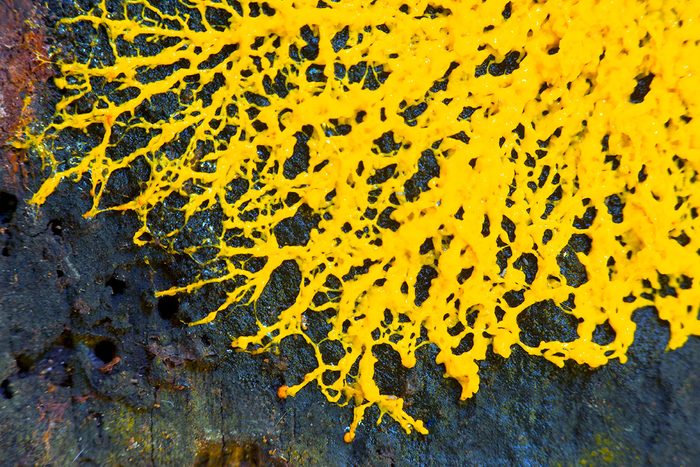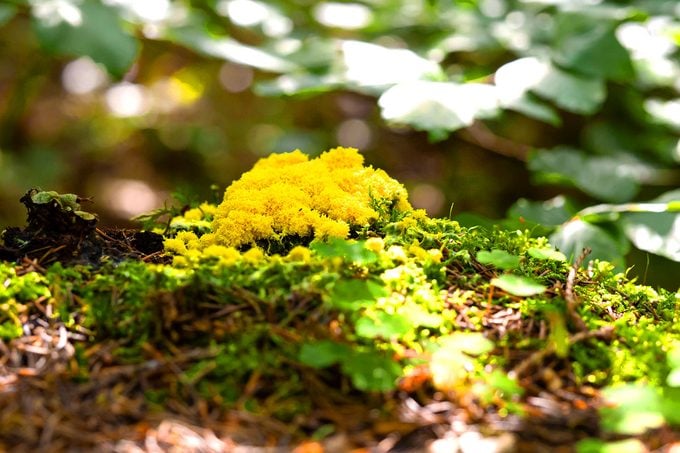If You See This Yellow Mold, This Is What It Is
Updated: Apr. 19, 2024

Do you get slimy patches of something resembling dog vomit growing in your yard after heavy rain? Here's what it is and what to do about it.
If you work hard to keep your lawn looking pristine, you’re probably familiar with how annoying the sudden appearance of ground-based molds and fungus in the soil can be. Combine warmth with lots of sustained moisture and you have the perfect recipe for fungus and mold spores to germinate, leading to annoying and ugly growths in your otherwise attractive yard space.
Depending on how particular you are, you might not mind a few mushrooms sprouting on your grass. Personally, I find them quite interesting and usually let them grow in my yard. But slime mold is a different matter, especially one particularly revolting variety—dog vomit fungus.
What Is Dog Vomit Fungus?
Officially named fuligo septica, dog vomit fungus is a particular type of slime mold that resembles the freshly regurgitated contents of a dog’s stomach (gross!). Despite its name, dog vomit fungus isn’t officially considered a fungus, nor is it technically a mold (although it belongs to a group of over 700 similar organisms unofficially called “slime molds”). Instead, it’s a simple, single-celled organism that thrives in areas of moisture and decomposition. Also called “scrambled egg slime,” the stuff is usually white, yellow or orange in color, but can also be greyish. It’s most common on tree bark or wood mulch, especially after heavy rain. Although it’s certainly ugly, dog vomit fungus isn’t toxic to people, pets or plants.
How to Get Rid of Dog Vomit Fungus

Although dog vomit fungus isn’t dangerous, it’s not nice to look at either. Here’s how to rid your yard of the stuff when it appears.
Rake it away
Every time I’ve dealt with dog vomit fungus, my tool of choice has been a good old steel-tined rake. The rake breaks up and spreads out the slime mold, while also depriving any that’s left of nutrients by removing the decomposing material it sprouted from.
Dry out your yard
Do you run a sprinkler to keep your lawn green? Consider turning it on less frequently. Dog vomit fungus loves moisture, and needs lots of it to survive. Your grass will probably do just fine with a little less water, but slime mold won’t.
Make it less shady
Like most decomposers, dog vomit fungus doesn’t like lots of direct sunlight. Make it tougher for the stuff to thrive by trimming any trees and bushes near where the slime mold appears. Less shade and more sun mean less chance of future dog vomit fungus outbreaks.
Remove its food source
Dog vomit fungus is much less likely to grow where there isn’t any decomposing wood. If your lawn has a bed of wood mulch, consider removing some or all of it where the slime mold sprouts.
